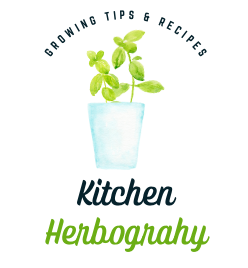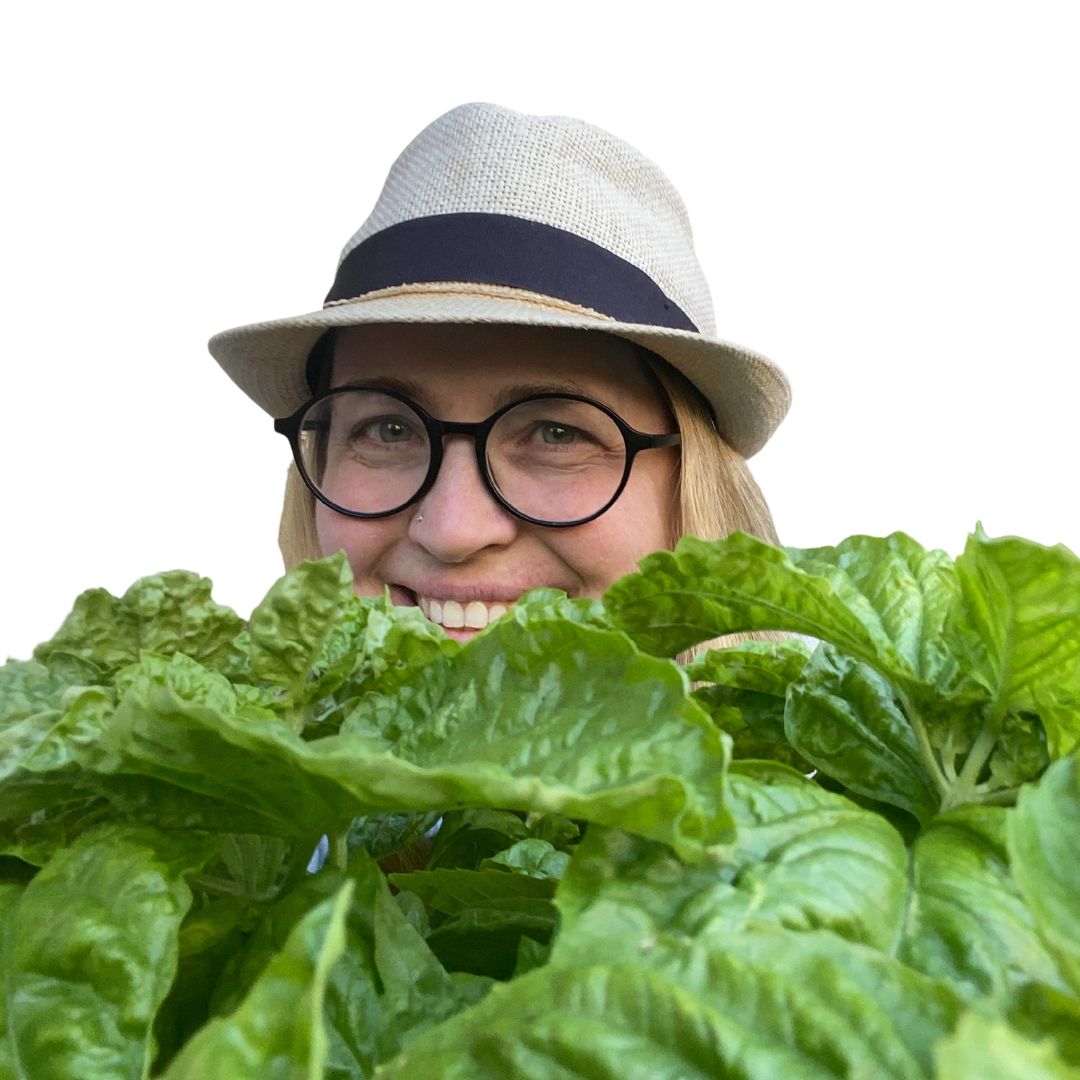As an Amazon Associate I earn from qualifying purchases. This website also participates in other affiliate programs and may earn commissions if you shop through the links used on this website.
(This article was originally published on September 18, 2022 and was last updated on September 18, 2022)
One of the world’s most popular and beloved culinary herbs, it’s easy to love the sweet, slightly anise, and peppery taste of sweet basil leaves. But have you ever found yourself wondering, can you eat basil stems? Whether you’re basil stem curious or you have a nagging guilt about throwing out those tender stems when making pesto, we’ve got the skinny on eating basil stems, including 10 ways to use basil stems in your cooking, plus a recipe!
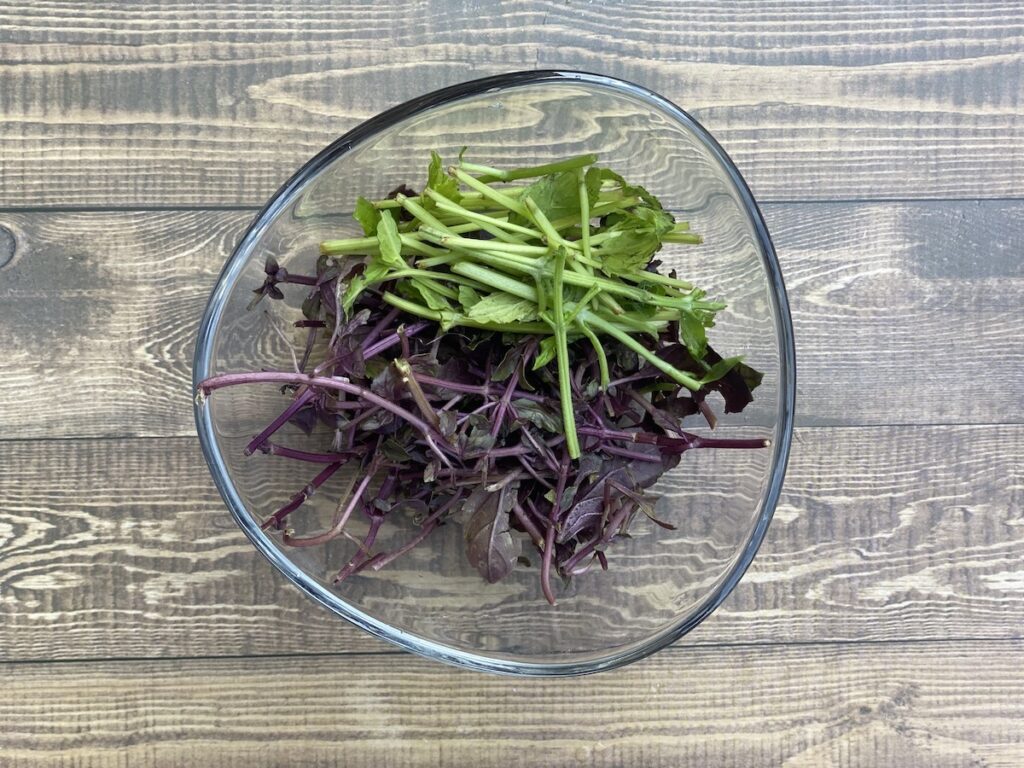
Can You Eat Basil Stems?
Yes, you can eat basil stems. Specifically, you can eat the young, tender and relatively thin basil stems near the top of the plant. While all basil stems are technically edible (they’re not harmful), they become thick, woody and bitter near the bottom of the plant, and are quite unappetizing and even difficult to chew.
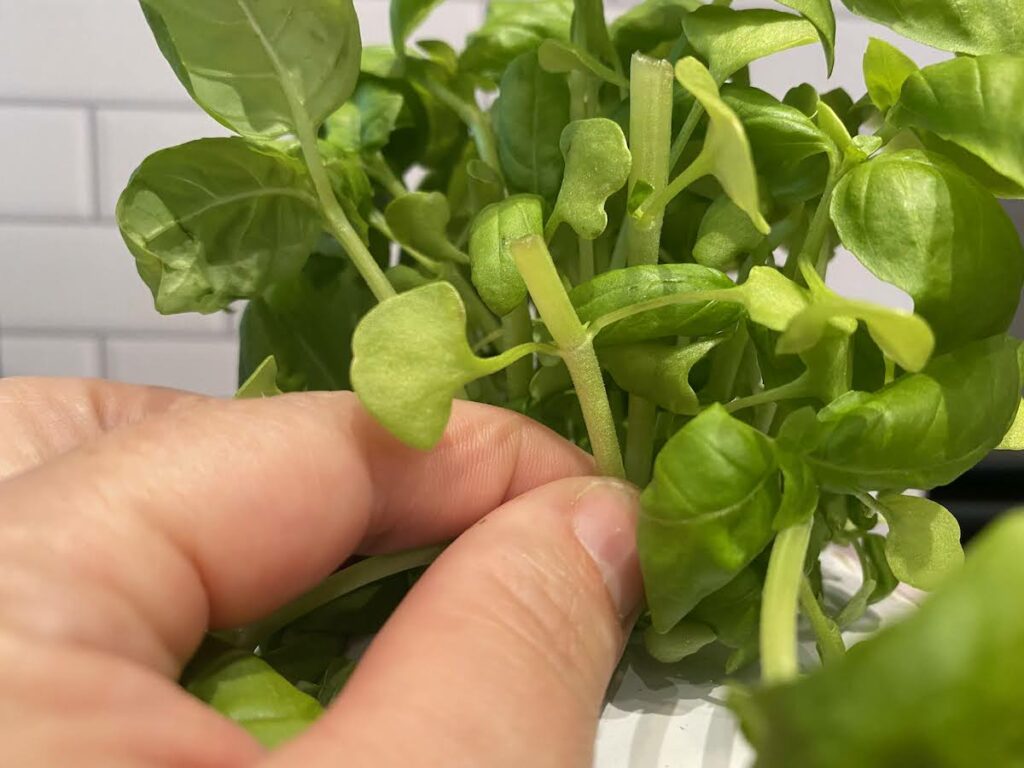
What Do Raw Basil Stems Taste Like?
Young basil stems have a fresh, clean taste that has more notes of mint than basil leaves, while still retaining a basil-like taste, albeit a bit milder.
Basil is in fact a member of the mint family, and the mint taste really comes through when munching on young basil stems raw.
Older, thicker, woody basil stems have a more bitter taste and are quite difficult to chew. If you do decide to try chewing an older, woody basil stem, proceed with caution, as they can hurt your teeth a bit.
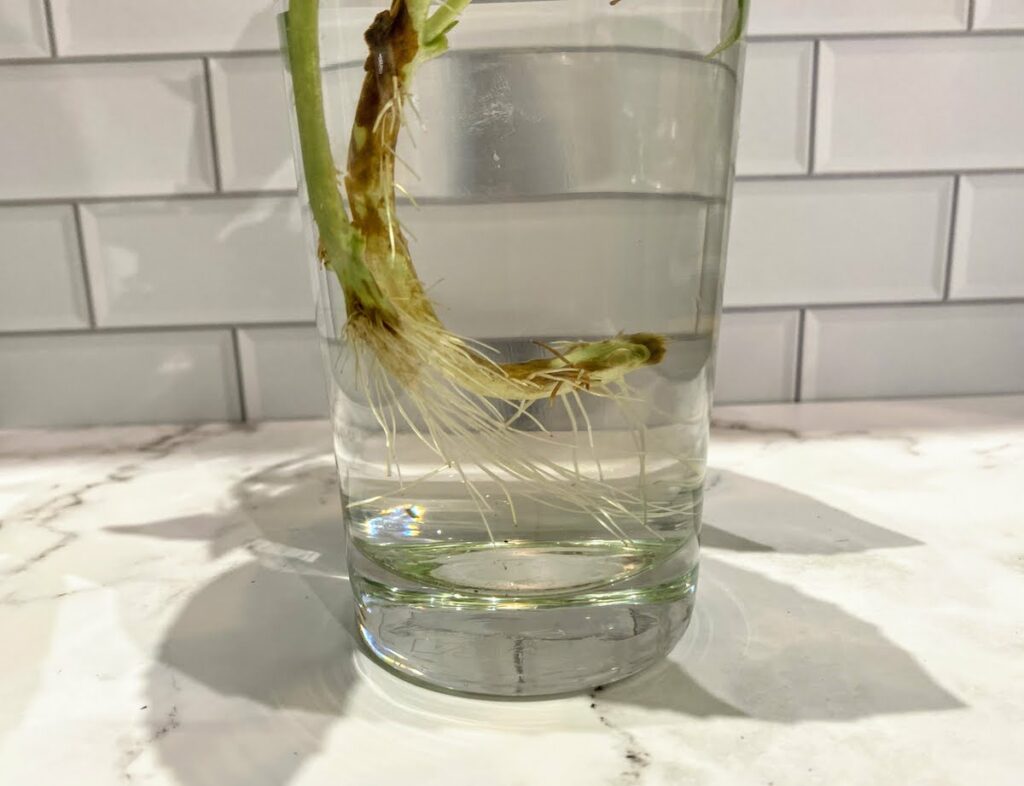
What Can I Do with Basil Stems?
Add the Stems to Pesto
It’s perfectly fine to use the young, tender stems from near the top of the basil plant (where you should be pruning from, anyway) to your pesto.
As you would with basil leaves, make sure you give them a thorough wash and pat them to dry, or use a salad spinner to get them really dry. A bit of water left over isn’t the worst thing in the world when making pesto, but in my experience pesto darkens/turns a darker green or blacker color when you freeze it, if there’s excess water in there!
And just as you can add basil stems to your pesto, add any basil flowers or buds in there, too!
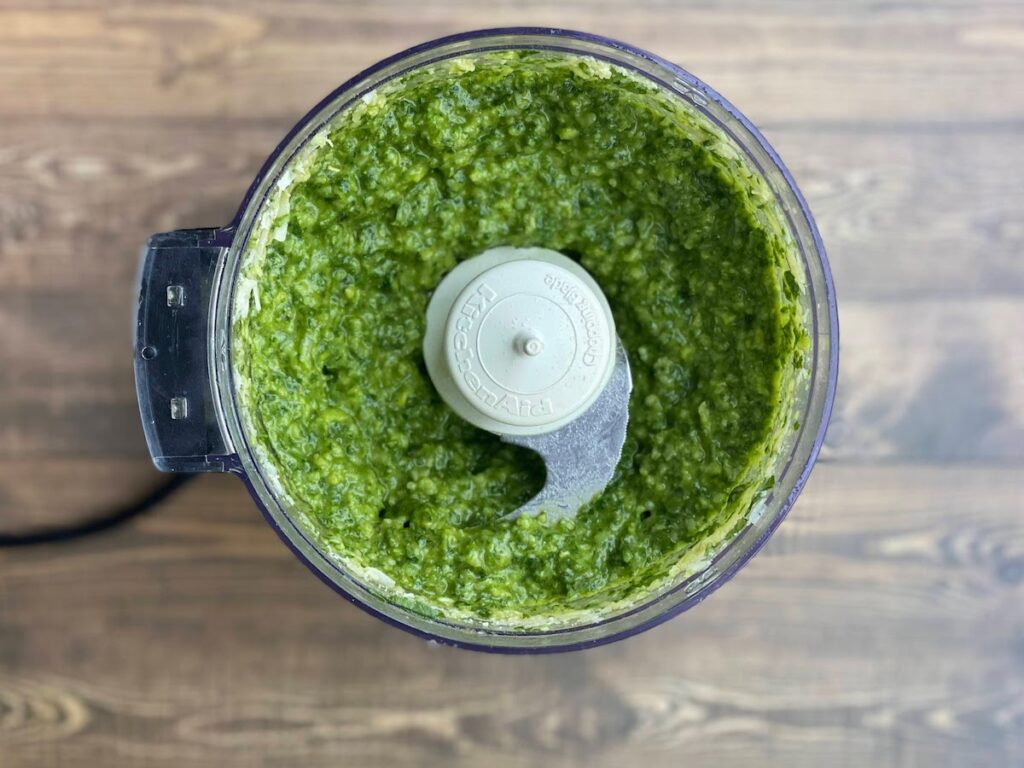
Fine Chop, and Add to a Salad
Again, only work with the tender, thin stems near the top of the plant, as the thicker, older stems are hard to chew (speaking from personal experience here!)
To eat basil stems in a salad, I’ve found the best thing to do is fine chop them like you would with chives. While basil stems are both edible and quite good, taste wise, they are tougher to chew than the tender leaves, so the fine chopping is key to enjoying them raw in a salad.
Stick them in Your Freezer, and Use for Broth
This is a pretty simple one, and a great way to reduce food waste. After picking a few leaves off your basil plant for a recipe, stick the stems (along with other veggie scraps, ends of leafy vegetables, etc) in a bag or container stored in your freezer. When it comes time to make a savory chicken or veggie broth, chuck them all in the pot, and enjoy the extra flavor from the frozen stalks.
Infuse Vodka
Basil infused vodka is delicious, and makes awesome cocktails, so why not try basil stem vodka? Follow the same process as you would for infusing basil leaves in vodka.
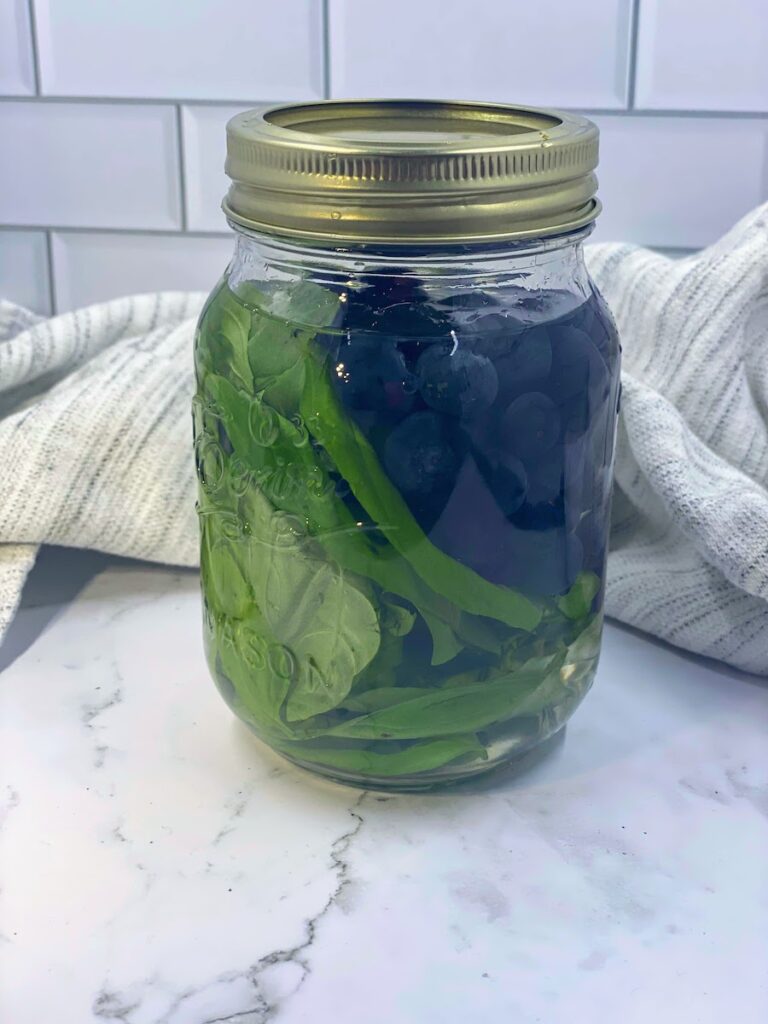
Make Basil Oil
As with vodka, so with oil. The slightly thicker, studier texture of basil stems vs basil leaves mean the stems hold up well for infusions, including basil oil.
Basil Stem Water
Infused basil water is delicious, and you can make a ton of different fruit, basil and herb combos that are quite delightful. Sub out basil leaves for basil stems in any basil water infusion, or add both leaf and stem.
Works with basil lemonade, as well!
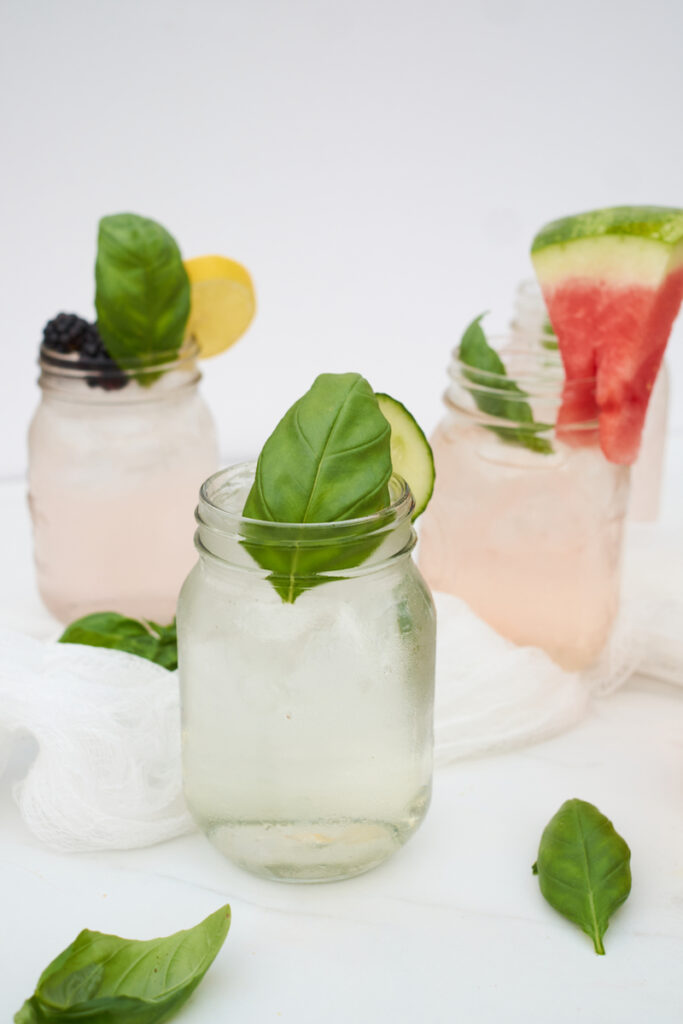
Add to Mirepoix
Mirepoix is the flavorful, aromatic base of a recipe that you often start out with, sauteeing in butter in a heavy sauce pan. I’m talking onions, garlic, celery, and carrots…and also basil stems?
While basil doesn’t tend to do well being cooked at high heat or for a long time (exception: Thai basil), the basil stems do better. Add to that, typically the veggie chunks in a mirepoix are strained out or removed before eating, so you’re perfectly within your rights to use the stems to get those fresh flavors in your mirepoix, and then remove them before eating (in which case, you’ll want to keep them fairly large, rather than fine chopped).
Use them Whole in a Sauce, Then Remove
Along the same lines of using them in a mirepoix and removing them, you can simply stick longer chunks of young basil stems in sauces as you cook, flavoring them. Then just pull them out with tongs or a slotted spoon before serving.
Add Basil Stems When Cooking Rice
Adding different flavors to rice while cooking is a serious flavor hack, and while fresh basil leaves would absolutely fail at this job (too hot, too long!) basil stalks are a great choice to add to the pot.
Finally, you can try out my herb stems salad dressing, below.
Mint, Lime and Fresh Basil Stems Salad Dressing
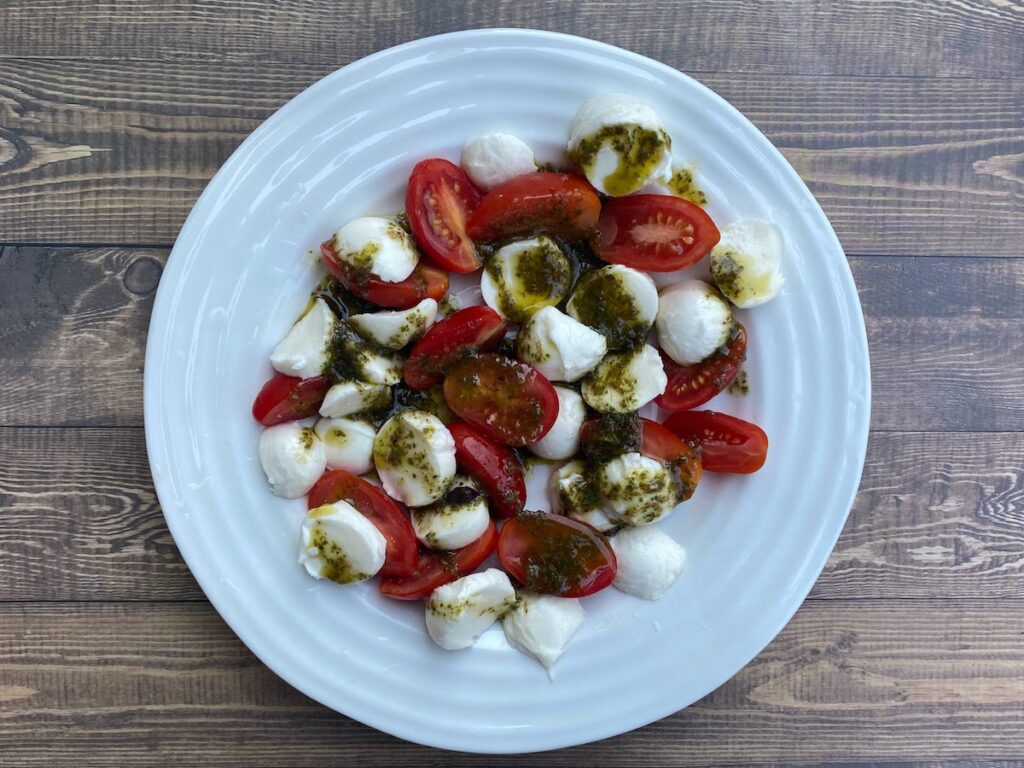
An easy option for home cooks to use up their basil stems, with a sweet and zesty salad dressing with a slightly crunchier texture! Great on a caprese salad for a twist on balsamic or tossed with greens.
Ingredients
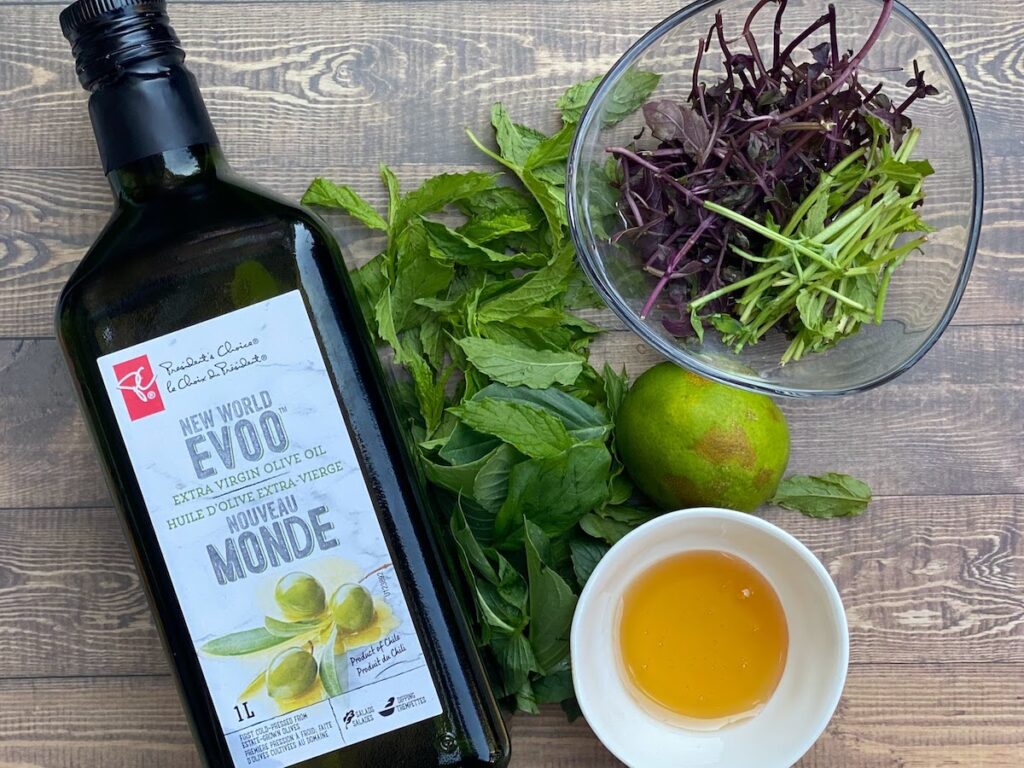
- 1/3 cup young, tender basil stems
- 1/4 fresh basil leaves (loosely packed)
- 1/4 cup fresh mint leaves
- 1 to 2 tablespoons freshly squeezed lime juice (start with less, and add as needed).
- 1 teaspoon honey
- 1/3 cup to 1/2 cup olive oil. Start with less and add as needed.
Kitchen Appliances
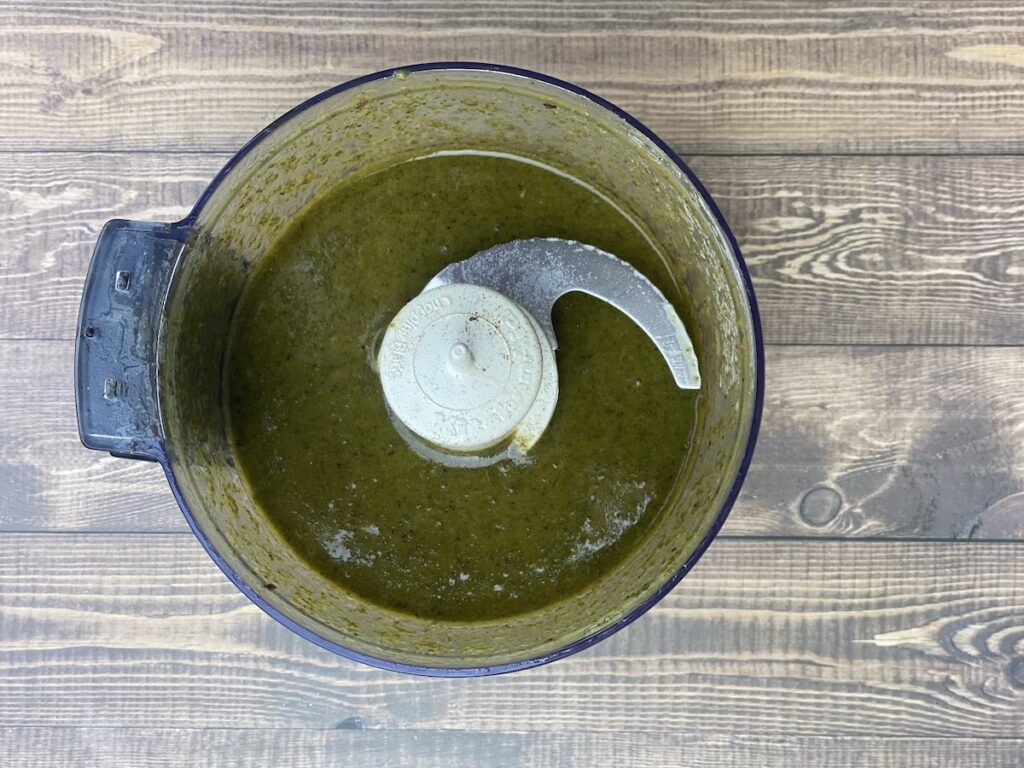
- Food processor or blender
- Salad spinner
Instructions
- Place all the ingredients in a food processor and pulse to blend:
- Harvest fresh basil from the top of your basil plant, and wash the fresh leaves and basil stems. Pat or spin to dry in a salad spinner.
- Remove the basil leaves from the stalks, setting aside the basil stalks for a bit later
- Pat the leaves to dry, and measure out about 1/4 cup fresh basil leaves, loosely packed. Add to food processor.
- Turning to the basil stems, separate the young tender basil stalks from the older, thicker woody stems. Add to food processor.
- Wash the mint leaves and spin/pat to dry. Add to food processor.
- Juice a fresh lime, and add 1 to 2 tablespoons. Start with around 1 tablespoon of lime juice, and add more to taste as needed.
- Add honey and olive oil.
- Enjoy!
Mint, Lime and Fresh Basil Stems Salad Dressing
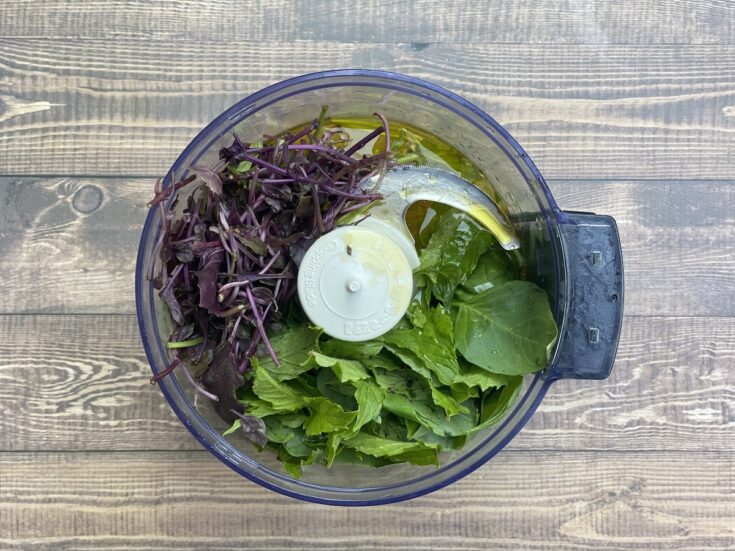
An easy option for home cooks to use up their basil stems, with a sweet and zesty salad dressing with a slightly crunchier texture! Great on a Caprese salad for a twist on balsamic or tossed with greens.
Ingredients
- 1/3 cup young, tender basil stems
- 1/4 fresh basil leaves (loosely packed)
- 1/4 cup fresh mint leaves
- 1 to 2 tablespoons freshly squeezed lime juice (start with less, and add as needed).
- 1 teaspoon honey
- 1/3 cup to 1/2 cup olive oil. Start with less and add as needed.
Instructions
- Place all the ingredients in a food processor and pulse to blend:
- Harvest fresh basil from the top of your basil plant, and wash the fresh leaves and basil stems. Pat or spin to dry in a salad spinner.
- Remove the basil leaves from the stalks, setting aside the basil stalks for a bit later
- Pat the leaves to dry, and measure out about 1/4 cup fresh basil leaves, loosely packed. Add to food processor.
- Turning to the basil stems, separate the young tender basil stalks from the older, thicker woody stems. Add to food processor.
- Wash the mint leaves and spin/pat to dry. Add to food processor.
- Juice a fresh lime, and add 1 to 2 tablespoons. Start with around 1 tablespoon of lime juice, and add more to taste as needed.
- Add honey and olive oil.
